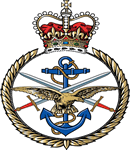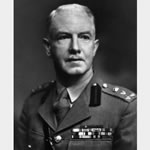Commemorated: | |||
| 1. Memorial: | Freemasons VC Memorial | Great Queen Street | |
Awards & Titles: | Victoria Cross | ||
Family :
Sinton was born in Victoria, British Columbia, the third of the seven children of Walter Lyon Sinton (1860–1930) and his wife, Isabella Mary, née Pringle (1860–1924), a family of Quaker linen manufacturers from north of Ireland. On his mother's side he was a cousin of James Pringle, and a nephew of Thomas Sinton and cousin of Ernest Walton on his father's. In 1890 they returned to Ulster where he was educated and lived for the rest of his life. He studied at the Royal Belfast Academical Institution and read medicine at the Queen's University, Belfast,[2] where he graduated in 1908 as first in his year.[3] He went on to attain degrees from the University of Cambridge (1910) and the University of Liverpool (1911).Sinton joined the Indian Medical Service in 1911, coming first in the entrance examinations, but before being posted to India was seconded as the Queen's University research scholar to the Liverpool School of Tropical Medicine where his contact with Sir Ronald Ross may have influenced his later career as a malariologist.
Education & Career :
Sinton is the only Fellow of the Royal Society to have received a Victoria Cross.[6] In his retirement he served as Deputy Lieutenant for County Tyrone and, in 1953, as High Sheriff of Tyrone.
At Kasauli, Sinton met Eadith Seymour Steuart-Martin (1894–1977), daughter of Edwin Steuart-Martin and Ada May Martin (née Martin), whom he married on 19 September 1923. Their daughter, Eleanor Isabel Mary Sinton, was born at Kasauli on 9 December 1924.
His name is remembered in Sinton Halls, a student housing block at the Queen's University, Belfast, where he sat on the senate and was a Pro-Chancellor. The Sinton Medical and Dental Centre at Thiepval Barracks, Lisburn is also named in his honour. Others honoured Sinton by naming three mosquito species, Aedes sintoni, Anopheles sintoni, and Anopheles sintonoides, one sandfly species, Sergentomyia sintoni, and one subgenus Sintonius of the genus Phlebotomus, after him.
He died at his home at Slaghtfreedan Lodge, Cookstown, County Tyrone, on 25 March 1956 and was buried with full military honours on 28 March at Claggan Presbyterian cemetery in Cookstown. Colonel H. W. Mulligan in an obituary in the British Medical Journal described him thus:
Sinton had an exceptionally quick, receptive, and retentive brain, but his greatness sprang not so much from his unusual intellectual gifts as from the simple qualities of absolute integrity and tremendous industry
His Victoria Cross is displayed at the Army Medical Services Museum at Aldershot.
Service Life:
Campaigns:
- The First World War 1914-1918, World-wide.
| Unit / Ship / Est.: Indian Medical Service |
| Action : War Survivor |
Although many perished in times of national conflict and in the service of their country, many more survived including those interned as Prisoners of War. Stories of those who did survive are included as part of this site, especially those with high gallantry awards, those included against an external rolls of honour and those who had a distinguished career in wartime and military leaderhip.
Citations & Commemorations :
For most conspicuous bravery and devotion to duty. Although shot through both arms and through the side, he refused to go to hospital, and remained as long as daylight lasted, attending to his duties under very heavy fire. In three previous actions Captain Sinton displayed the utmost bravery.Masonic :
| Type | Lodge Name and No. | Province/District : |
|---|---|---|
| Mother : | Triune Brotherhood No. 2121 E.C. | East Punjab |
Initiated | Passed | Raised |
30th November -0001 | 30th November -0001 | 30th November -0001 |
Source :
The project globally acknowledges the following as sources of information for research across the whole database:
- The Commonwealth War Graves Commission
- The (UK) National Archives
- Ancestry.co.uk - Genealogy, Family Trees & Family History online
- ugle.org.uk - The records of the United Grand Lodge of England including the Library and Museum of Freemasonry
Additional Source:
- Founder Researchers : Paul Masters & Mike McCarthy
- Researcher : Bruce Littley

